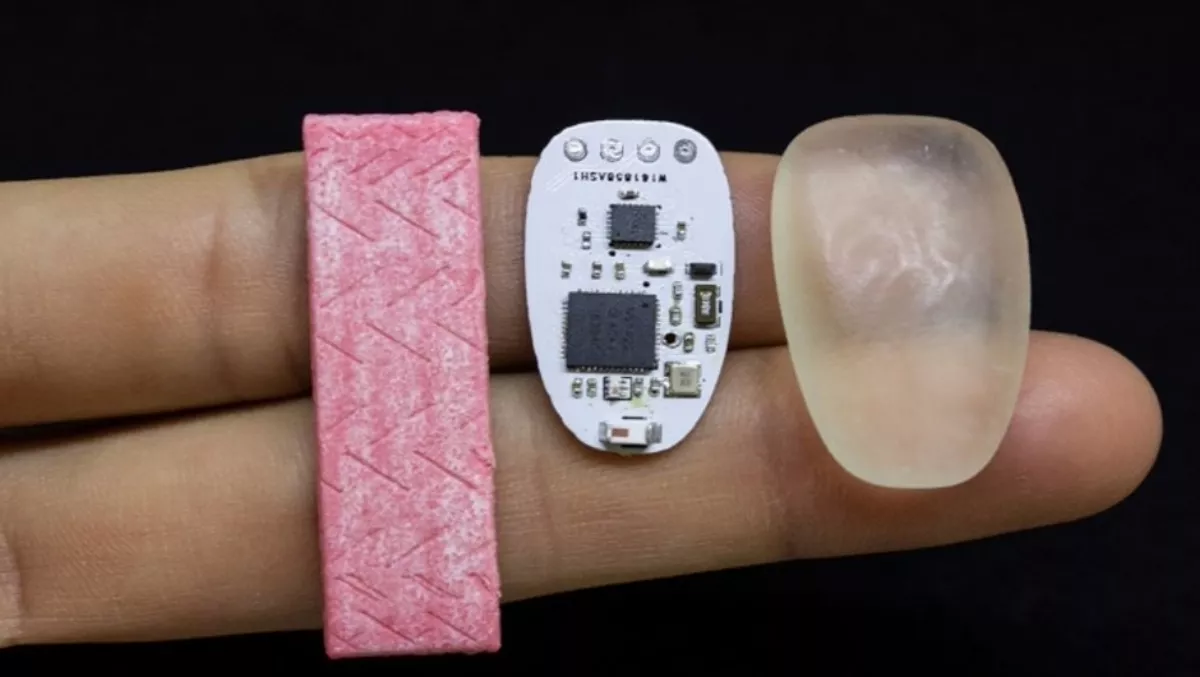
Phone ringing? This biohack wants you to bite down and ChewIt
So your phone's ringing, but instead of swiping right or pushing a Bluetooth button you bite down on a tiny piece of tech that sits in your mouth.
If that sounds odd, welcome to the world of wearable technology, augmented humans and maybe even biohacking – the next generation of tech that's being tested right here in New Zealand.
The Auckland Bioengineering Institute's Augmented Human Lab team have created a device called ChewIt, which essentially sits on your tongue and allows you to have 'discreet' hands-free interaction with technologies like your phone, computer and smartwatch.
The tech is encased in a flexible, custom-made PCB – but it's not clear exactly what happens if you accidentally swallow it…
ChewIt was developed by Pablo Gallego (ME student) under the supervision of Dr. Denys Matthies, and led by associate professor Suranga Nanayakkara. Nanayakkara, who is originally from Singapore, has a few accolades under his belt already.
Nanayakkara has also created FingerReader, a prototype finger device that allows wearers to point at written words (for example, words on the spine of a book, or words in a restaurant menu. The FingerReader then translates those written words into voice.
The Augmented Human Lab team has also developed GymSoles, which is a pressure-sensitive insole that vibrates to let people sort out the correct body posture. Tests showed that it was effective for people who perform exercises like squats and dead lifts because it helped them to maintain the correct centre of pressure.
GymSoles's vibrotactile feedback could also be used for many other posture-correcting improvements, the team says.
So with tech that could improve posture to tech that literally makes you bite your tongue, what is Nanayakkara's goal?
"We want to design and develop systems that can understand the user rather than us having to tell the technology what to do every time – technologies that can understand us much better than technology currently does," he says.
He believes there's a mismatch between innate human behaviour and what technology has to offer. His research wants technology to respond to human behaviour, rather than expect humans to adjust to technology.
This, he says, is 'assistive augmentation'. "It's when the system understands the abilities, behaviour and emotions of the user. And when the system is unobtrusive and integrated with our body or our behaviour," he says.
"And it should be about strengthening and extending the physical and sensorial abilities of the user, allowing them to do what they couldn't do before. When you meet all three measures, that's assisted augmentation.


